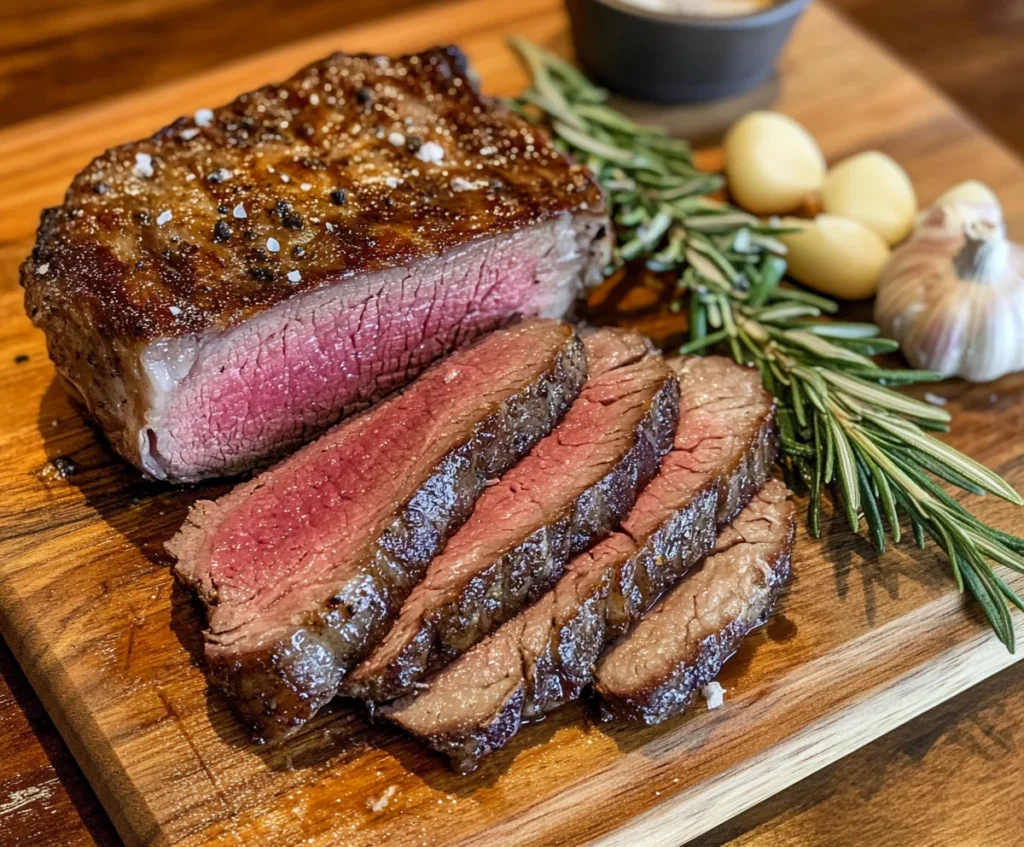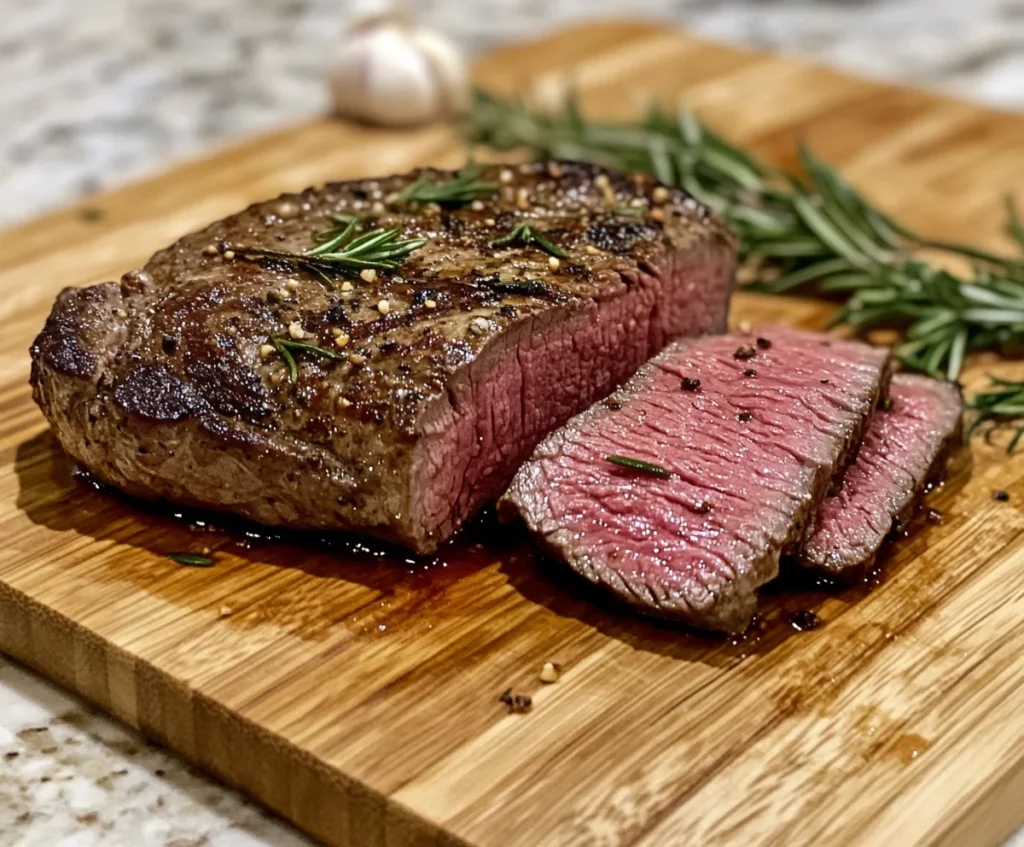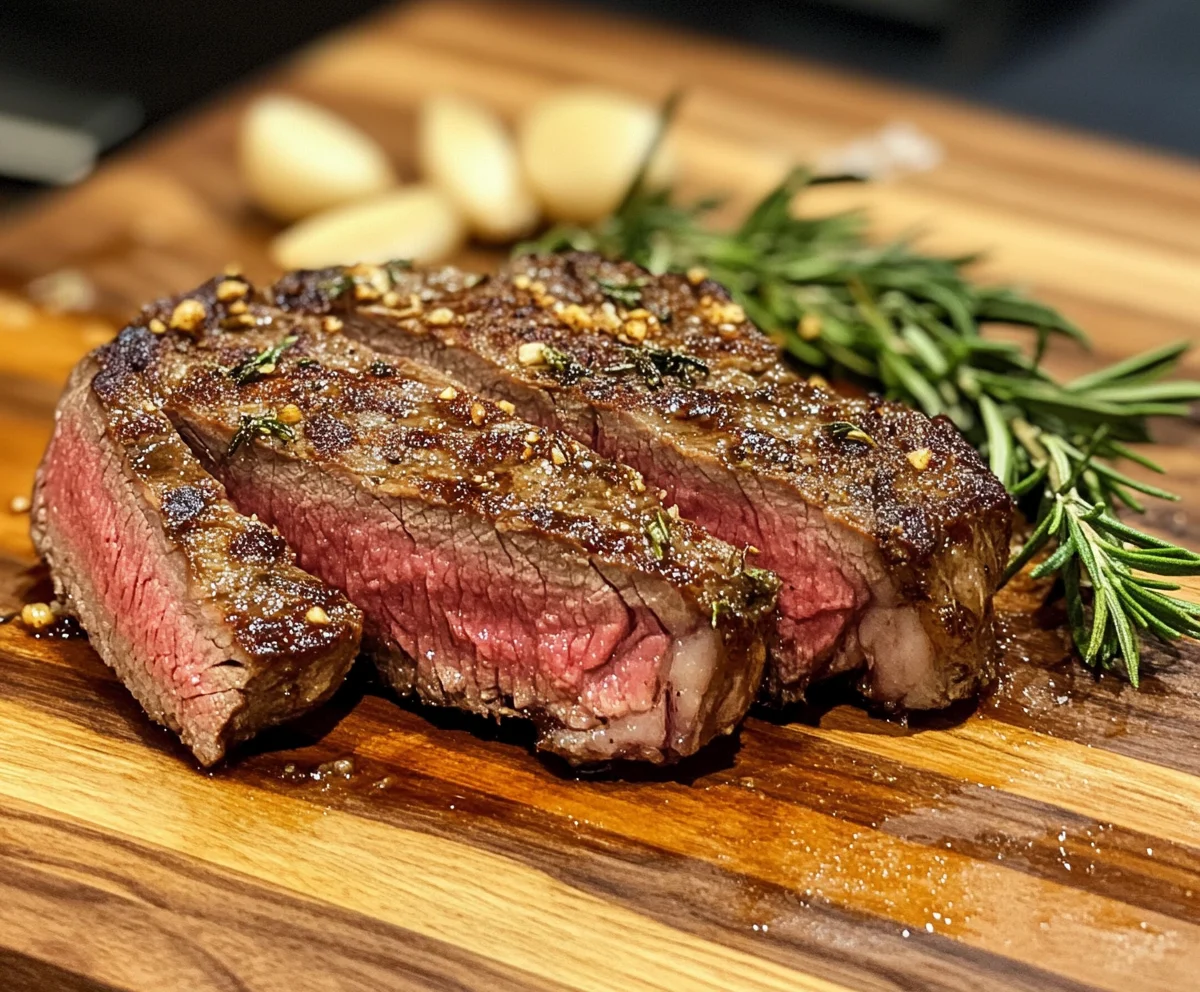If you’ve ever wondered What temperature should a ribeye roast be cooked at to achieve that perfect balance of tenderness and flavor, you’re in the right place! Whether you’re preparing this cut for a special occasion or a casual dinner, cooking it to the right temperature is crucial. Getting the temperature just right ensures your ribeye roast is juicy, tender, and perfectly cooked to your desired level of doneness. This guide will walk you through the ideal temperatures for different doneness levels, the best methods for cooking, and some expert tips to make sure your ribeye roast is a success every time.
The Perfect Temperature for a Ribeye Roast
Cooking ribeye roast isn’t just about getting it done—it’s about getting it right. Achieving the perfect doneness depends entirely on the internal temperature. Each doneness level calls for a slightly different temperature, and using a meat thermometer is the most reliable way to get it right every time. Here’s a handy guide to the ideal internal temperatures for various levels of doneness:
| Doneness Level | Internal Temperature (°F) | Internal Temperature (°C) |
|---|---|---|
| Rare | 120-125°F | 49-52°C |
| Medium-Rare | 130-135°F | 54-57°C |
| Medium | 140-145°F | 60-63°C |
| Medium-Well | 150-155°F | 65-68°C |
| Well-Done | 160°F+ | 71°C+ |
As a general rule, remove the roast from the oven when it’s about 5°F (2-3°C) below your target temperature. This ensures that the meat will continue cooking as it rests, so you get that perfect level of doneness.

Cooking Methods for Ribeye Roast
The method you use to cook your ribeye roast can make a huge difference in the end result. Let’s explore two popular methods that will help you cook a ribeye roast that’s flavorful, tender, and just right:
Slow Roasting at Low Temperature
Temperature: 225-275°F (107-135°C)
Time: 3-4 hours for a 5-pound roast
Why It Works: Cooking at a low temperature for a long period ensures an even cook throughout, giving you a super tender, juicy roast. The slow melt of the fat helps keep the meat moist, resulting in a roast that’s full of flavor.
Drawback: It does take longer than other methods.
When you cook a ribeye roast at a low temperature, you’re allowing the fat to render gradually, making the roast more flavorful and tender. If you enjoy a roast that’s deeply flavorful with melt-in-your-mouth tenderness, this method is a great choice.
High-Heat Sear Followed by Slow Roasting
Temperature: Start at 450°F (232°C) for 15-20 minutes, then reduce to 325°F (163°C)
Time: 2-3 hours for a 5-pound roast
Why It Works: This method gives you the best of both worlds—a beautiful crispy crust on the outside, while keeping the interior juicy and tender.
Drawback: You’ll need to be vigilant to ensure the roast doesn’t overcook or burn.
By starting with a high temperature, you get that gorgeous sear on the outside, creating a flavorful crust. Then, you reduce the heat to finish cooking the roast, allowing it to stay juicy and tender on the inside.
The Importance of a Meat Thermometer
Using a meat thermometer is one of the best ways to guarantee that your ribeye roast is cooked perfectly. Here’s how you can use one to get the most accurate reading:
- Insert the Thermometer Properly: Make sure to place the thermometer in the thickest part of the roast, avoiding bones or pockets of fat, which can lead to incorrect readings.
- Start Checking Early: Begin testing the internal temperature about 30 minutes before you think the roast will be done. This will help you keep things on track.
- Oven-Safe Thermometers: These thermometers are ideal since they let you monitor the temperature without needing to open the oven, which helps keep the heat steady.

Resting Your Ribeye Roast
Once your ribeye roast has reached the perfect temperature, don’t immediately carve it. Let it rest for a while. Resting allows the juices inside the roast to redistribute, so when you slice it, every piece is just as juicy and flavorful as the last.
Why Letting It Rest Matters
- Juice Redistribution: While cooking, the juices in the meat are pushed toward the center. Letting it rest gives those juices time to spread evenly throughout the roast, making each slice more flavorful.
- Prevents Dryness: If you cut the roast too soon, you’ll lose those delicious juices, and the meat will end up dry.
- Enhances Flavor: Resting also gives the muscle fibers time to relax, so the flavors really shine through when you take that first bite.
How Long Should You Rest the Roast?
- Minimum Resting Time: 15-20 minutes
- Optimal Resting Time: 30 minutes (cover loosely with foil to keep it warm)
Common Mistakes to Avoid When Cooking Ribeye Roast
Even the most experienced cooks can fall victim to common mistakes when preparing ribeye roast. Here’s a quick rundown of things to avoid for the best results:
- Skipping the Meat Thermometer: Without a thermometer, you’re guessing, which often leads to overcooking or undercooking.
- Not Letting It Rest: If you cut into the roast right away, all the juices will spill out, leaving you with dry meat.
- Cooking at Too High of a Temperature: High temperatures can quickly dry out the meat and ruin the texture.
- Not Seasoning Enough: Ribeye roast benefits from being generously seasoned, so don’t be shy with the spices!
- Slicing Too Soon: Always let the roast rest for at least 15 minutes before slicing to keep it juicy.
FAQs
What’s the best temperature for a medium-rare ribeye roast?
For a medium-rare ribeye roast, the ideal internal temperature is 130-135°F (54-57°C). Pull it out of the oven when it reaches 125-130°F (52-54°C) because it will keep cooking while resting.
How long should I cook a 5-pound ribeye roast?
If you’re cooking at 275°F (135°C), it will take around 3-4 hours. At 325°F (163°C), it will take about 2-3 hours.
Should I cover the ribeye roast while cooking?
It’s best to leave the roast uncovered so it can develop a nice crust. If it’s browning too fast, you can loosely cover it with foil.
Can I cook a ribeye roast at 350°F?
Although you can cook it at 350°F, it tends to cook too quickly, which can dry out the roast. It’s better to cook it between 275-325°F (135-163°C) for more even results.
How can I tell when my ribeye roast is done?
The best way to check is by using a meat thermometer. Don’t forget to let the roast rest for at least 15 minutes after cooking to lock in the juices.
Final Thoughts
Cooking a ribeye roast to perfection doesn’t have to be a daunting task. The key is to get the temperature just right and use a method that works for your schedule and preferences. Whether you like it rare or well-done, a meat thermometer will ensure that your roast is cooked exactly the way you want it. And don’t forget to let it rest before carving for the juiciest, most flavorful result. By following these steps, you’ll end up with a ribeye roast that’s guaranteed to impress!

